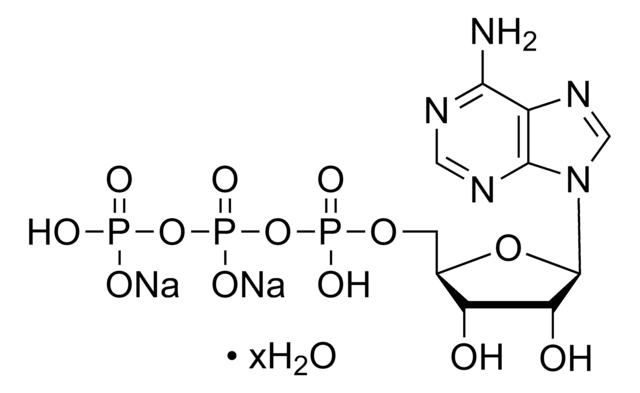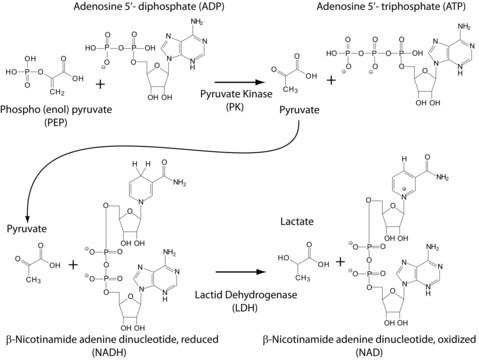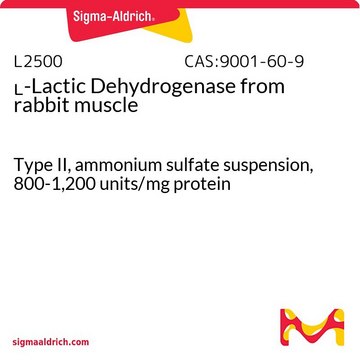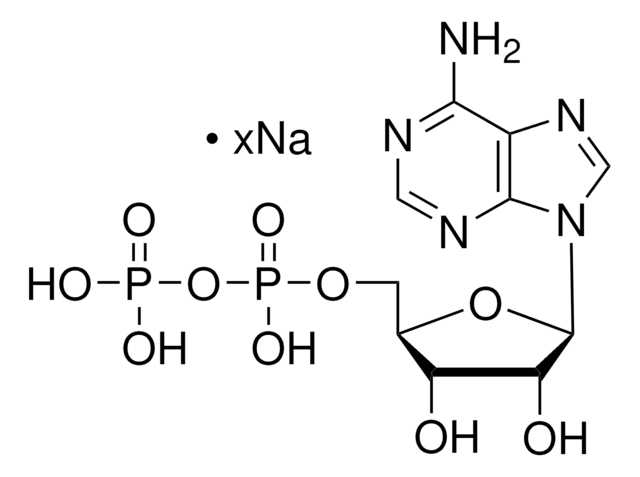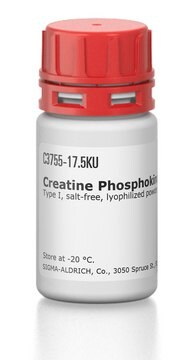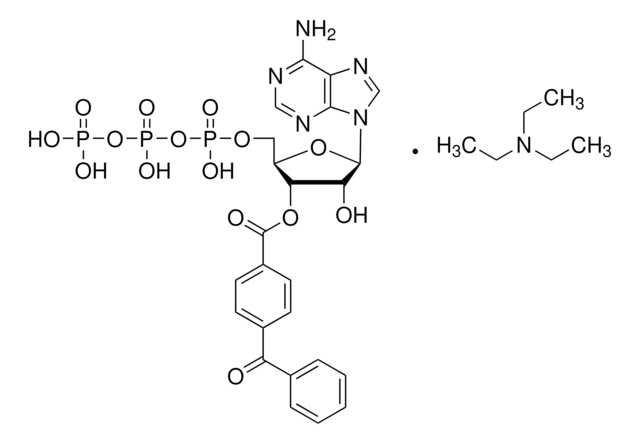Wichtige Dokumente
M1434
2-Methylthioadenosin-5′-monophosphat -triethylammonium (Salz) Hydrat
solid, ≥98% (HPLC)
Synonym(e):
2-MeSAMP, 2-Methylthio-AMP -triethylammonium (Salz) Hydrat
About This Item
Empfohlene Produkte
Assay
≥98% (HPLC)
Form
solid
Lagerbedingungen
desiccated
Farbe
white
Löslichkeit
H2O: 20 mg/mL, clear, colorless
Lagertemp.
−20°C
SMILES String
O.CCN(CC)CC.CSc1nc(N)c2ncn([C@@H]3O[C@H](COP(O)(O)=O)[C@@H](O)[C@H]3O)c2n1
InChI
1S/C11H16N5O7PS.C6H15N.H2O/c1-25-11-14-8(12)5-9(15-11)16(3-13-5)10-7(18)6(17)4(23-10)2-22-24(19,20)21;1-4-7(5-2)6-3;/h3-4,6-7,10,17-18H,2H2,1H3,(H2,12,14,15)(H2,19,20,21);4-6H2,1-3H3;1H2/t4-,6-,7-,10-;;/m1../s1
InChIKey
YQMUWWZKFZERBT-IDIVVRGQSA-N
Verwandte Kategorien
Anwendung
- Als P2Y12-Inhibitor zur Untersuchung seiner Auswirkungen auf die Stimulation von Endozytose in Lipoproteinen hoher Dichte (HDL)
- Als P2Y12-Inhibitor zur Untersuchung seiner Auswirkungen auf die Rekrutierung von Thrombozyten in menschlichem Vollblut.
Biochem./physiol. Wirkung
Lagerklassenschlüssel
11 - Combustible Solids
WGK
WGK 3
Flammpunkt (°F)
Not applicable
Flammpunkt (°C)
Not applicable
Persönliche Schutzausrüstung
Eyeshields, Gloves, type N95 (US)
Hier finden Sie alle aktuellen Versionen:
Besitzen Sie dieses Produkt bereits?
In der Dokumentenbibliothek finden Sie die Dokumentation zu den Produkten, die Sie kürzlich erworben haben.
Kunden haben sich ebenfalls angesehen
Unser Team von Wissenschaftlern verfügt über Erfahrung in allen Forschungsbereichen einschließlich Life Science, Materialwissenschaften, chemischer Synthese, Chromatographie, Analytik und vielen mehr..
Setzen Sie sich mit dem technischen Dienst in Verbindung.